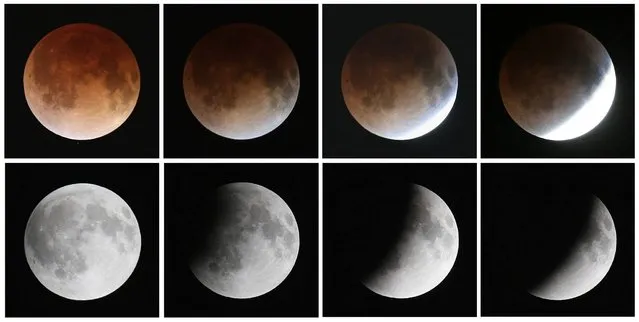
This composite image shows a sequence, from bottom left to top left, of the moon's transition during a total lunar eclipse on April 15, 2014 in Miami, Florida. People in most of north and south America should be able to witness this year's first total lunar eclipse, which will cause a “blood moon” and is the first of four in a rare Tetrad of eclipses over the next two years. (Photo by Joe Raedle/Getty Images)
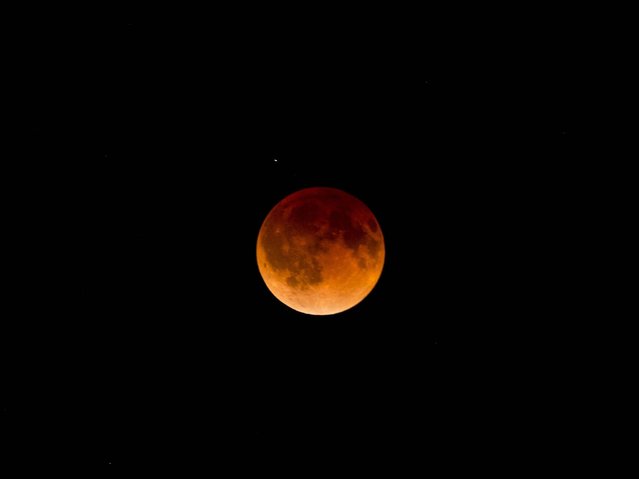
A total lunar eclipse in the sky over the Mexican city of Guadalajara. (Photo by Hector Guerrero/AFP Photo)
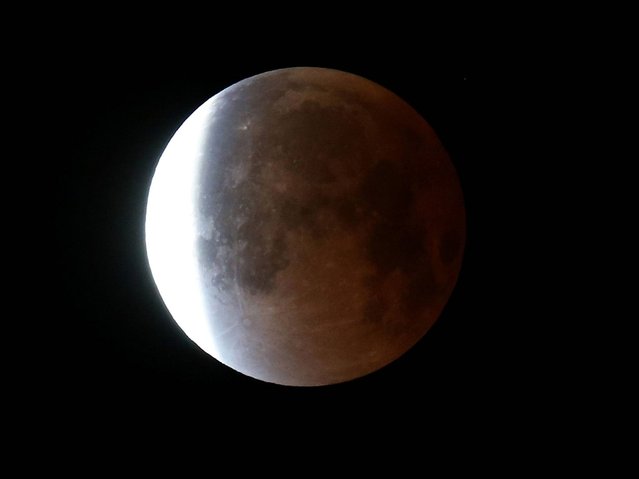
The moon is seen as it emerges from a total lunar eclipse in Miami, Florida. (Photo by Joe Raedle/Getty Images)
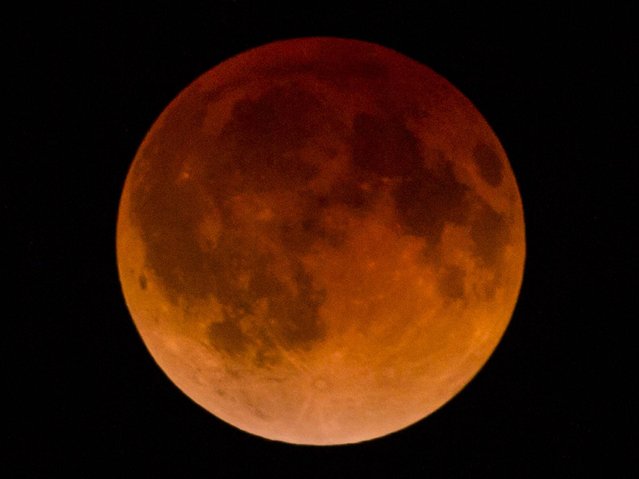
A total lunar eclipse was visible from North and South America, but sky watchers in northern and and eastern Europe, eastern Africa, the Middle East and Central Asia were out of luck, according to US space agency NASA. (Photo by Hector Guerrero/AFP Photo)
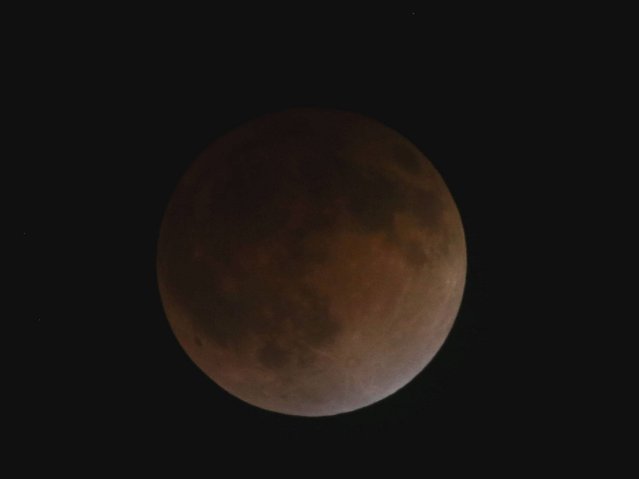
The moon is seen as it nears a total lunar eclipse in San Francisco, California. (Photo by Justin Sullivan/Getty Images)
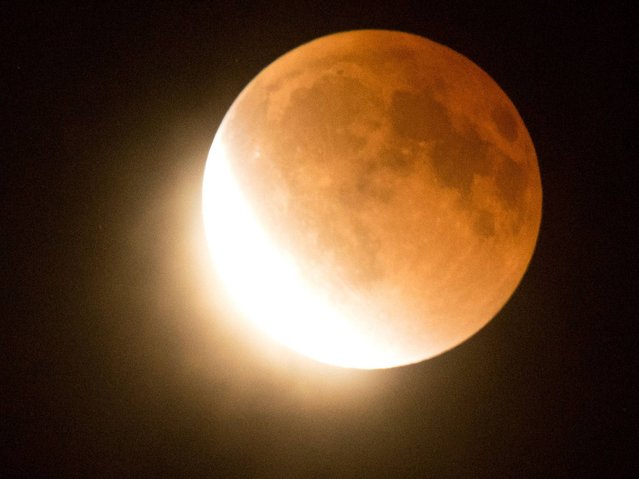
The moon moves out of a lunar eclipse over southern California as seen from Korea town, west of downtown Los Angeles. (Photo by Joe Klamar/AFP Photo)
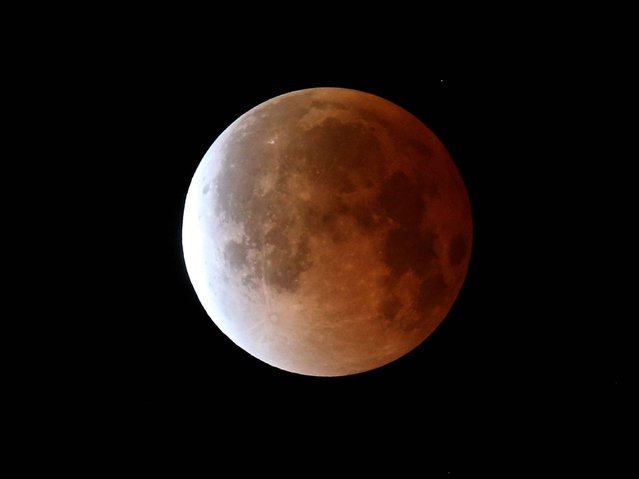
The moon is seen during a total lunar eclipse in Miami, Florida. (Photo by Joe Raedle/Getty Images)
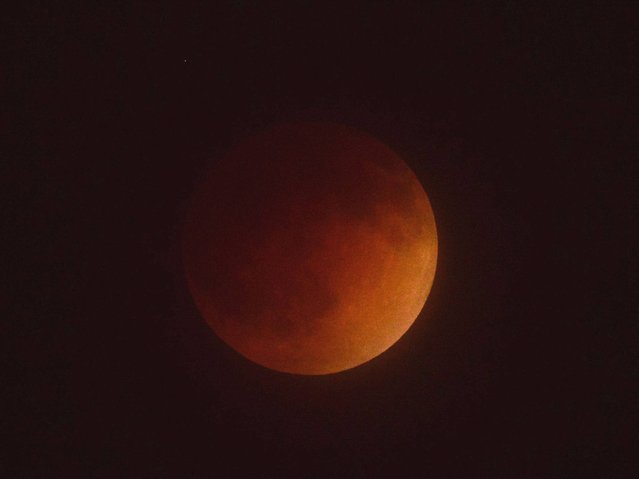
A lunar eclipse takes place over southern California as seen from the San Gabriel Valley, east of downtown Los Angeles. (Photo by Frederic J. Brown/AFP Photo)
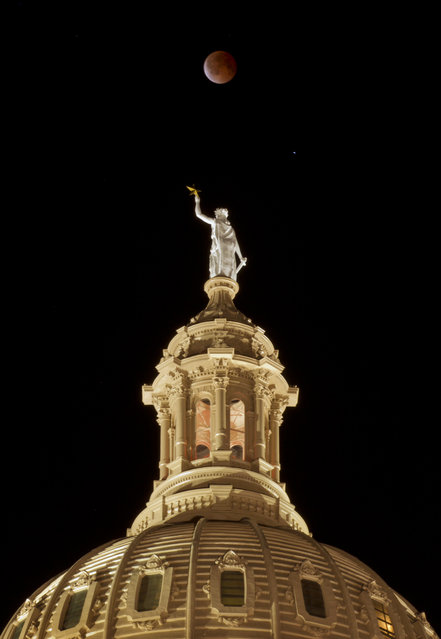
The moon glows a red hue over the Goddess of Liberty statue atop the Capitol in Austin, Texas, during a total lunar eclipse Tuesday, April 15, 2014. Tuesday's eclipse is the first of four total lunar eclipses that will take place between 2014 to 2015. (Photo by Jay Janner/AP Photo/Austin American-Statesman)
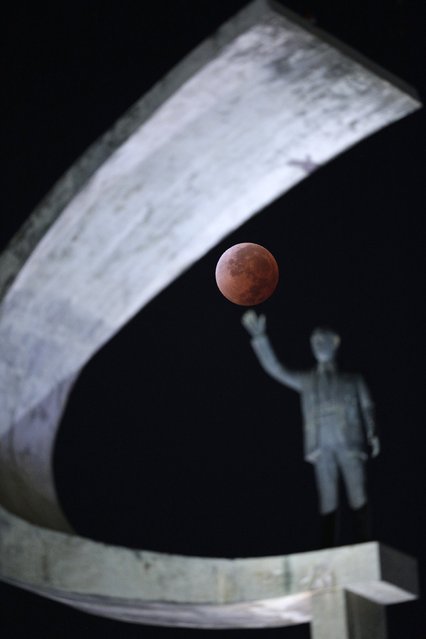
The moon is shown in eclipse in Brasilia April 15, 2014. The lunar eclipse on Tuesday will unfold over three hours when the moon begins moving into Earth's shadow. A little more than an hour later, the moon will be fully eclipsed and shrouded in an orange, red or brown glow. (Photo by Ueslei Marcelino/Reuters)
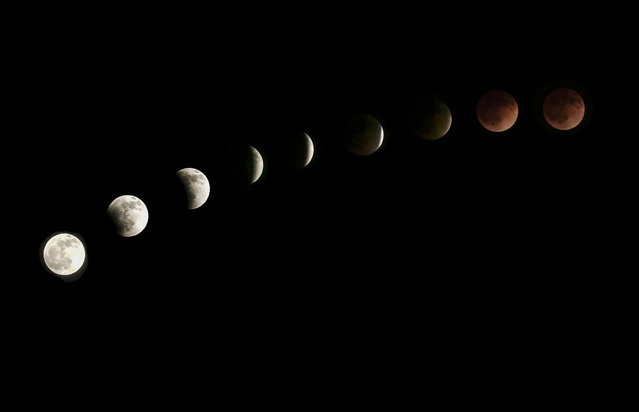
The moon is seen as it nears a total lunar eclipse on April 15, 2015 in Venice, California. (Photo by Rich Polk/Getty Images)
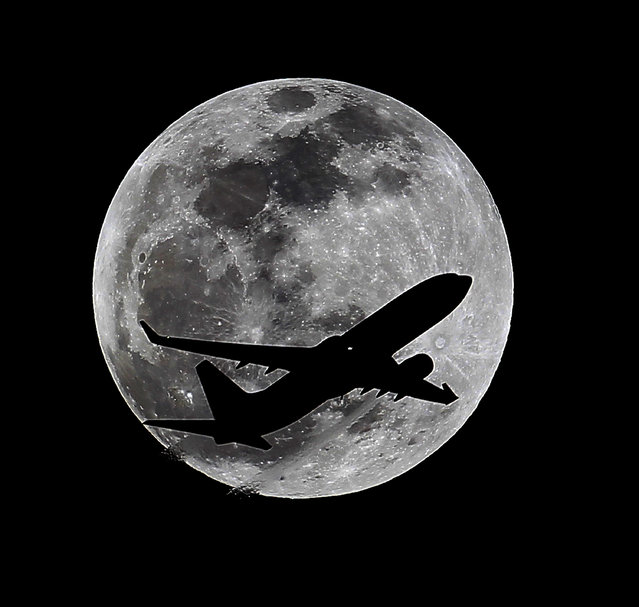
An airliner crosses the moon's path, Monday, April 14, 2014, above Whittier, Calif., approximately one hour before a total lunar eclipse. Then, on April 29, the Southern Hemisphere will be treated to a rare type of solar eclipse. In all, four eclipses will occur this year, two lunar and two solar. (Photo by Nick Ut/AP Photo)
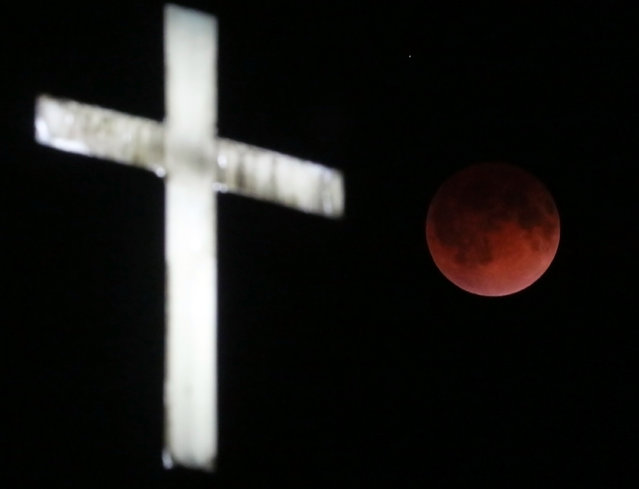
The Earth's shadow renders the moon in a crimson hue during a total lunar eclipse behind the illuminated steeple of St. Olaf Lutheran Church in the town of Ashippun , Wis. Tuesday, April 15, 2014. (Photo by John Hart/AP Photo/Wisconsin State Journal)
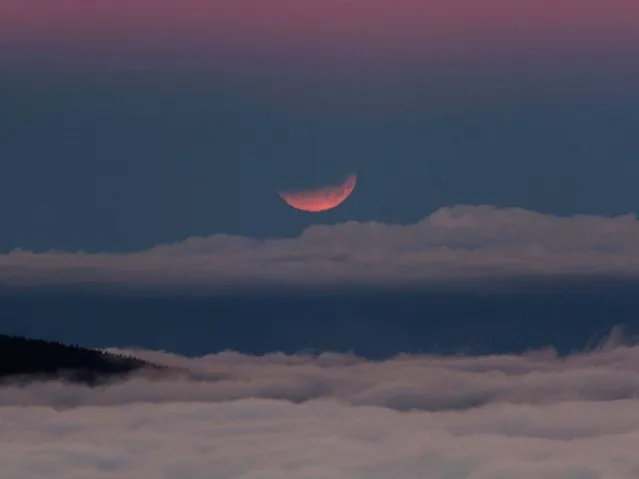
The moon is seen during a total lunar eclipse from the Spanish Canary island of Tenerife. (Photo by Desiree Martin/AFP Photo)
15 Apr 2014 14:28:00,
post received
0 comments
